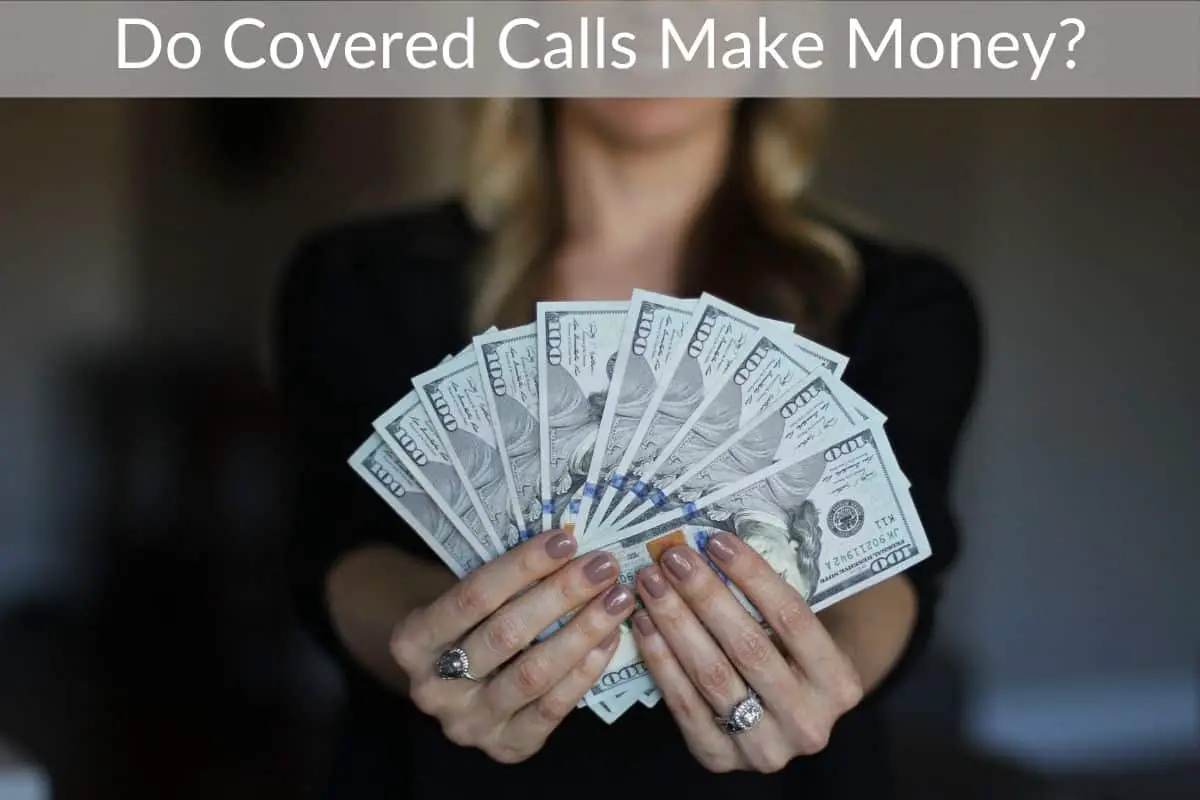Table of Contents
Professional investors use various strategies to reduce potential risks on their portfolios while boosting their overall returns. Covered calls are one such technique.
*This post may contain affiliate links. As an Amazon Associate we earn from qualifying purchases.
However, are they effective, and do they make money?
Covered calls can make money if you buy high-quality stocks and they don’t drop a ton after you sell the call. When selling a covered call you have some downside protection (if the stock price drops) and also have some upside. However if the stock has a massive upwards movement you will miss out on that gain.
Since you sold a call at a specific strike price anything above that price goes to the buyer of the call. So if you sell a covered call with a strike price of $100 and the stock skyrockets to $150 you will be forced to sell that stock to them at $100 missing out on that 50% gain.
Although covered calls cap your gains it’s a great way to earn an income on stocks you already own.
In this article, you’ll learn all about covered calls, including what they are, how they work, and how you can use them to increase your investment income.
How Covered Calls Make Money
A covered call is a 2-fold investment strategy whereby an investor buys or owns a stock and sells call options on a share-for-share basis.
When you own a stock or futures contract, you can sell a call against it whenever you please at the current market price. Since you can sell a call contract against the shares or other contracts you own you are “covered” if the call option gets exercised… hence it’s a covered call.
How can you make money on a covered call?
Sell to an Investor
The most common way to make money from a covered call is simply by selling the call to another investor. The buyer gets full rights to own your security, whether on or before the expiration date, at an agreed-upon strike price through a process called covered call writing.
The buyer enters into a contract (call option) with the seller (option writer) to buy shares at a predetermined price, and the call option gives them the right (not obligation) to purchase 100 shares of the underlying stock at the strike price any time on or before the expiration date.
This is because each call option contract covers 100 shares of the underlying equity.
This means you, as the call option seller, own the underlying security, the option is “covered.” This means you already own the security on which you’re selling the call option and can cover the transaction.
Same Day Premiums
To get the right to buy shares or contracts at a predetermined future price, a buyer pays the owner of the call option a premium price.
The buyer typically pays the premium to you on the same day the option is sold. Furthermore, the option seller retains the money regardless of how much the shares rise or fall in value or whether the call is exercised or not.
Whenever you sell a covered call, you receive payment in return for giving up a portion of the potential future upside.
Long Stock Positions
A covered call becomes the most profitable if the stock almost reaches the strike price, generating profit due to holding the long stock position. Meanwhile, the sold-off call expires worthless. This enables the call writer or seller to benefit from the entire premium while also holding the stock and getti by the potential gain.
Another covered call can then be sold at the next higher strike price or at the same strike price for a larger premium.
Here’s an example to illustrate this:
Suppose you buy a stock at $40 per share, expecting it to rise to $50 in a year. However, you’re willing to give up further upside by selling it at $45 within six months.
In this case, selling a covered call might be attractive.
If the $45 six-month call option costs the buyer $4 premium per share, writing this covered call obligates you to sell at $45 within six months (if the underlying stock price achieves that level).
As a result, you retain the $4 premium plus $45 from the share sale, earning a total of $49 within the six months if the option is exercised.
However, if the stock price falls to $30, you’ll incur a loss of $10 on the initial position. But since you keep the $4 premium earned from the call option sale, the total loss is reduced to $6 per share.
Ideally the stock price would end at $44-$45 so you would keep the premium and the stock. You could then sell another call for the next six months at $4 and increase your profits even further.
How To Sell Covered Calls
As discussed earlier, you can earn an income (option premium) selling covered calls on quality stocks you already own. What’s more, this method is pretty safe as the money you get from premiums is guaranteed.
To sell covered calls profitably, however, you must understand the rights and obligations of both buyers and sellers.
Here’s a guideline of what you need to have in place before selling covered calls. You’ll need to:
- Have ownership of the (underlying) equity plus 100 shares of the equity underlying each call option.
- Determine the strike price to use when selling the covered call option.
While you can earn money selling covered calls, the amount you make may depend on the:
- Strike price
- Stock market volatility
- Expiration date
Usually, the higher the volatility, the higher the amount of the premium you can expect to make selling covered calls.
Conversely, in calm markets, you might have to sell covered calls with a further expiration date or you won’t make as much money on selling the calls.
Pros of Covered Calls
Below are some of the advantages of using covered calls:
- Collecting a cash premium from your shares or futures contracts in return for limiting future upside above the strike price plus premium can help increase your upside return.
- Covered calls can help lower your costs or balance out a downward risk.
- Covered calls limit your maximum loss to the price paid for the security, less the option premium received.
Why Covered Calls Are Risky
Every investment comes with some risk, and covered calls are no exception. Below are some of the possible dangers in using covered calls:
You Risk Losing Potential Returns
You can make money with covered calls, but there’s also a significant risk of losing out on potential returns.
Note that you’ll always gain by collecting income from selling a covered call, plus this income is guaranteed. However, if the equity falls in value and you proceed to sell it, you’d lose money.
You Have To Hold On to Your Shares
As a call seller, you have to hold on to your underlying shares (or contracts) to avoid being left holding naked calls. This is because if the underlying instrument rises, there’s a likelihood of suffering a huge loss.
To mitigate the risk mentioned above, you need to buy back options positions before they expire if you want to sell shares or contracts.
However, doing so adds to your transaction costs, thus lowering your gains or increasing overall losses.
If your equity drops in value at expiration, you could offset the loss by writing another call option.
Alternatively, you could buy additional stock, thereby lowering your average cost, and write additional call options.
You Risk Not Participating in a Large Stock Price Rise
Another potential risk is the opportunity risk of not fully participating in a large stock price rise.
This is because while the covered call remains open, the call writer must (is obliged) to sell the stock at the predetermined strike price.
As a result, and since the profit potential offered by the premium is limited, if a significant stock price rise occurred, the covered call writer would miss out on the great opportunity.
I have a perfect example of this that happened to me just this last month.
A few months ago I purchased a stock for $3 and sold a call against it (a covered call) for .35. That call expired worthless so I made a 10% gain even though the stock had barely moved.
I then sold another call against that same stock for .65 bringing my total to $1 in premiums that I had received (a 33% gain in under 4 months)! However 2 weeks after selling that second call, the stock had some amazing news come out and it tripled in price (to over $10 a share).
The call was then exercised and my shares were sold.
So, although I still made 33% on that investment by selling a covered call I missed out on an over 300% gain!
That is a risk that you take when selling covered calls. You risk missing out on big gains to get decent gains on a regular basis.
Final Thoughts
Covered call writing has its pros and cons. But if done correctly and with the proper security, covered calls can provide an excellent strategy to minimize your transaction costs while generating an income.
Although I hated missing out on a 300% gain the 30% gain that I made in 4 months is fine as it fits what I am personally trying to do with my covered call strategy.

